Gaelic Psalm Singing and the Sacred Soundscapes of the Hebrides – by Frances Wilkins
📷 Photo by Peter McNally
I first came across the incredible sound of Gaelic psalm singing back in 2002 when I was living in London and studying music at the School of Oriental and African Studies (SOAS). As part of my degree, I had the opportunity to do some work experience and spent a day a week over a couple of years in the sound archive of Cecil Sharp House in Camden, the home of the English Folk Dance and Song Society. My job was to digitise a collection of 78 recordings that had been gathered in the 1940s and ‘50s for a substantial BBC archiving project. Having just moved to London from Shetland, I was assigned the Scottish collection of material – so many beautiful Gaelic songs, Shetland fiddle tunes, piping and ballad singing among other styles and instruments. It was an exciting time and I discovered some amazing music while I was doing this, and a few tunes that I ended up learning and recording in the duo, Blyde Lasses.
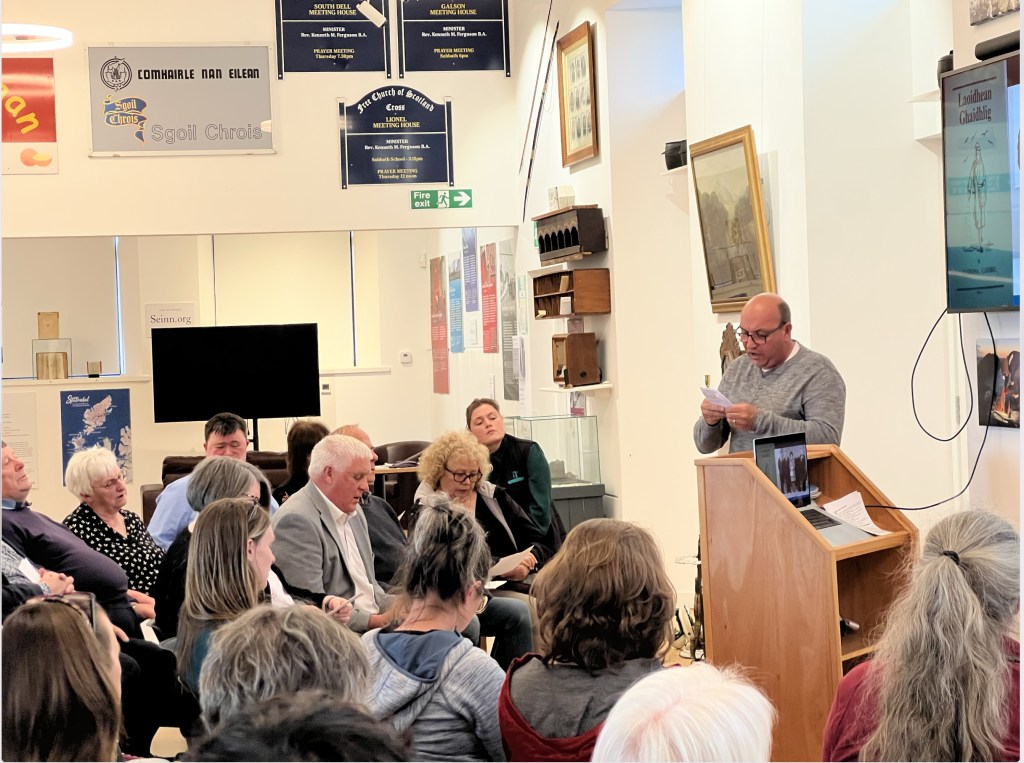 📷 Angus Murray singing at a public talk, Comunn Eachdraidh Nis, Ness, Lewis. June 2025. (Photo by Mary Stratman)
📷 Angus Murray singing at a public talk, Comunn Eachdraidh Nis, Ness, Lewis. June 2025. (Photo by Mary Stratman)
On one of these days I was sitting in the archive, dusting off the first of a new batch of recordings for transfer to CD, when one of the librarians (and also a fine singer), Peta Webb, appeared in the door and we got chatting. She said, ‘you’re digitising all this Scottish music. Have you ever heard Gaelic psalm singing? It’s incredible – like nothing else you’ve heard in the British tradition. It sounds more like Islamic singing than singing from these islands’. I admitted that I’d never heard of it but would look it up. When I came across a recording, I was blown away by the sound – incredibly powerful, moving, and evocative. Peta was right – it had the hint of some Middle-Eastern traditions, and this has been noted by the likes of Scottish musicologist John Purser, who pointed out the remarkable similarities between Gaelic psalm singing and some forms of Ethiopian Christian singing.
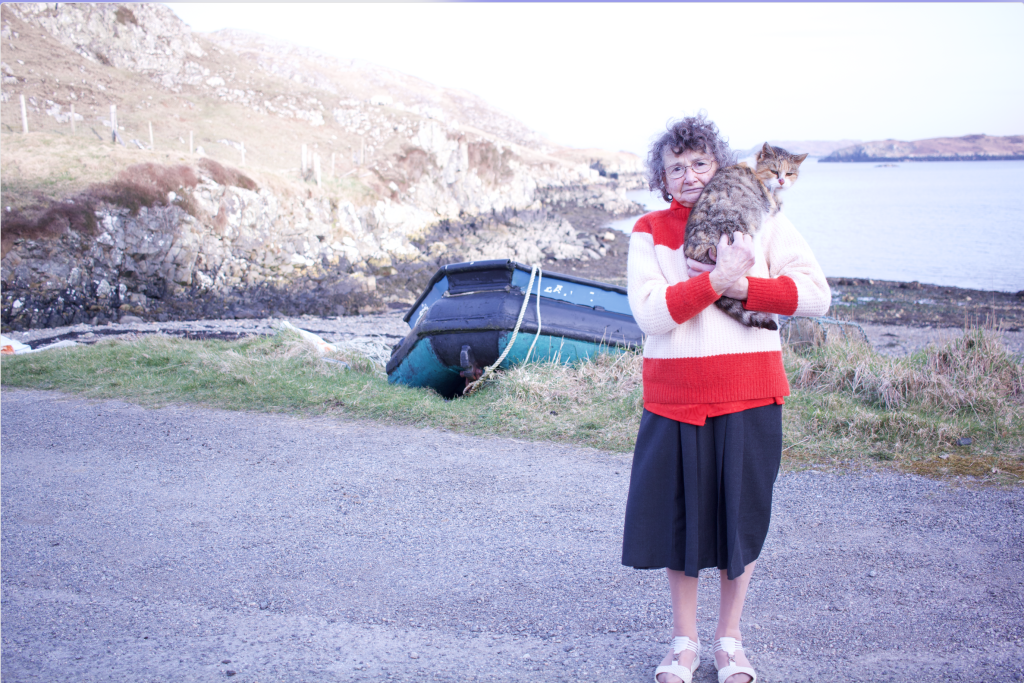 📷 Marybelle MacKinnon, Crossbost, Lewis. March 2022. (Photo by Frances Wilkins)
📷 Marybelle MacKinnon, Crossbost, Lewis. March 2022. (Photo by Frances Wilkins)
Since my time in London I have gone on to become a professional ethnomusicologist – someone who seeks out, researches and promotes the wonderful musical traditions often hidden from view within communities. The practitioners I meet rarely sing or play music as a profession but take part in musical traditions as an innate expression of their identity – whether that be geographical, occupation, spiritual, or linguistic. I have researched singing in fishing communities and among fishermen at sea, music from the days of the whaling industry and the fur trade, fiddling and dancing in subarctic indigenous communities, and more recently the incredible spiritual song, psalm and hymn traditions spread out across the Hebrides. I am based at the Elphinstone Institute, University of Aberdeen, where I completed my PhD in 2009. As a senior lecturer in ethnomusicology I teach on the MLitt programme in folklore and ethnology, training students to study the cultures of Northern Scotland (and beyond) in context.
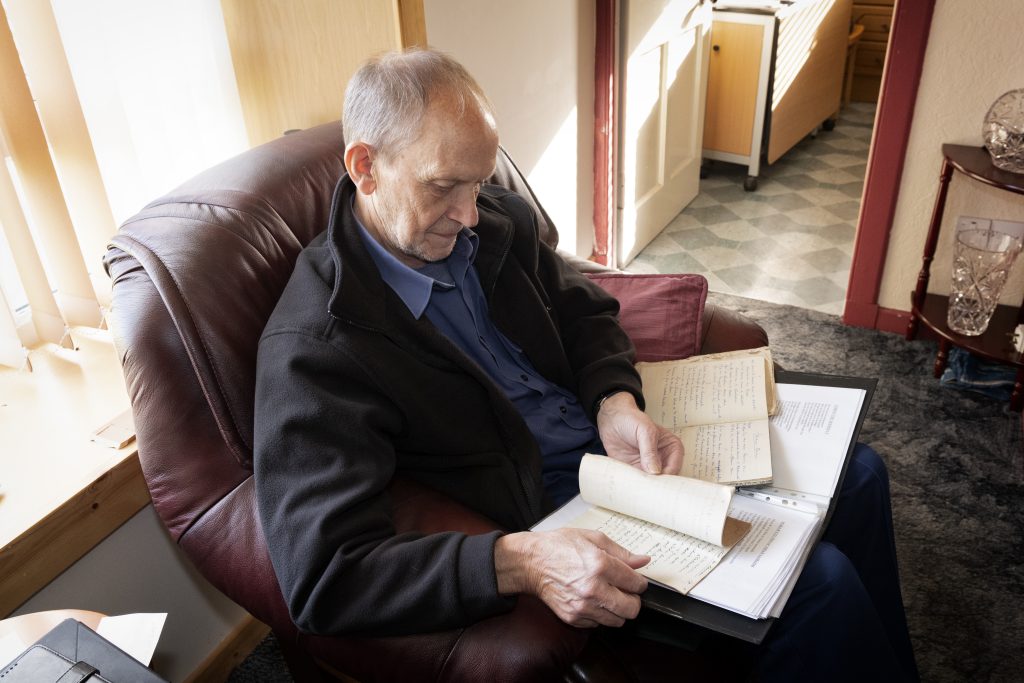 📷 Murdo J Morrison, bard and Gaelic psalm precentor, Fivepenny, Ness, Lewis, March 2022. (Photo by Mairi M Martin)
📷 Murdo J Morrison, bard and Gaelic psalm precentor, Fivepenny, Ness, Lewis, March 2022. (Photo by Mairi M Martin)
In the last few years I have interviewed and recorded many singers from across the Hebrides and have travelled throughout the islands, meeting people and hearing their stories and songs. The result has been a substantial archive of songs, interviews, field recordings, photographs and videography.
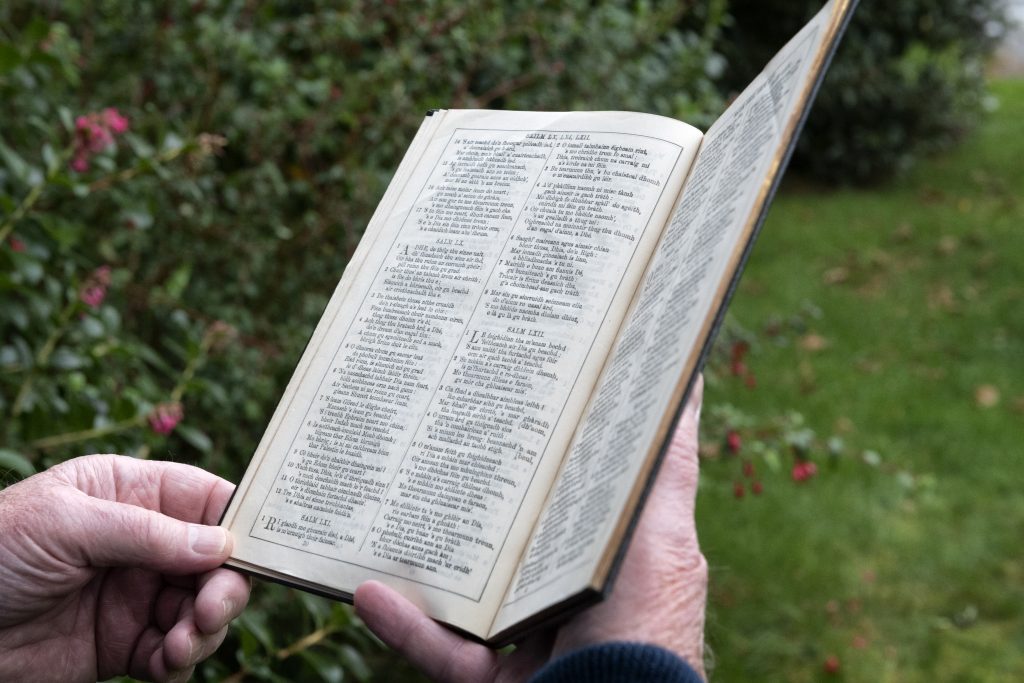 📷 Gaelic psalter. (Photo by Mairi M Martin)
📷 Gaelic psalter. (Photo by Mairi M Martin)
Gaelic psalm singing is one of our oldest living musical forms in Scotland, with its roots in the years following the 1560 Scottish Reformation, when singing in churches suddenly shifted from choral singing in Latin, to unaccompanied congregational psalm singing in the vernacular language. It was led by a precentor, someone (usually male) who sang out each line for the then mostly illiterate congregation to follow. In most places, this style of singing was replaced by more modern singing styles but in the Gaelic speaking churches of the Hebrides, the old style of singing remained and became an important part of Hebridean culture. Many people I spoke with, regardless of whether they were religious or not, expressed how elemental the tradition was to all aspects of life in the past, forming a musical soundtrack to their daily lives – in daily ‘family worship’, at weddings, funerals, wakes, and other gatherings where people congregated together.
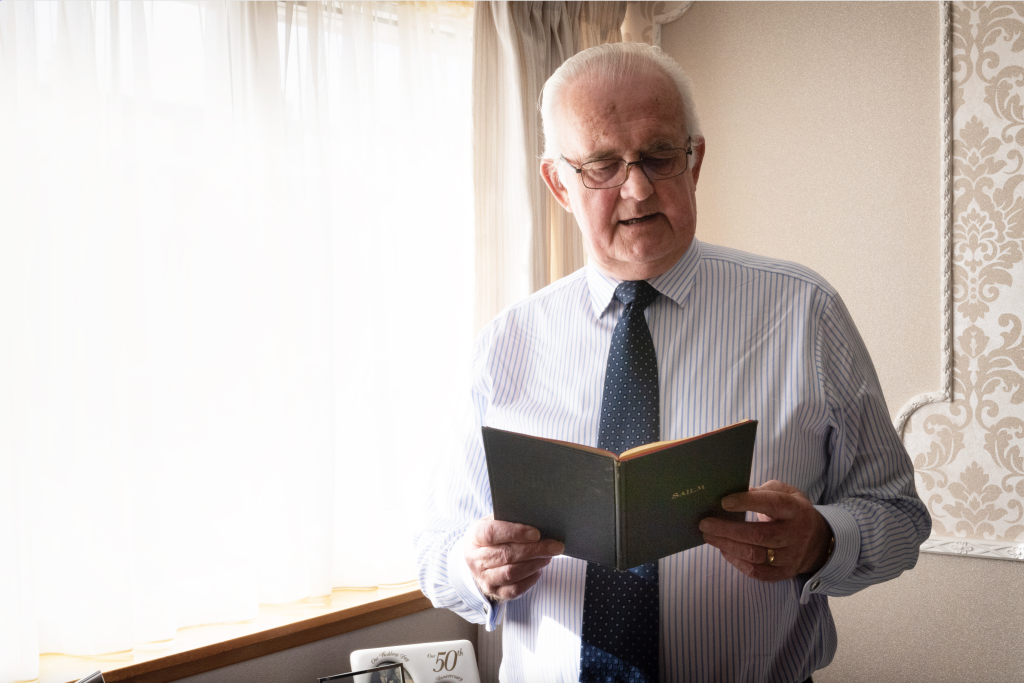 📷 D R MacDonald, Gaelic psalm precentor, Stornoway. October 2022. (Photo by Mairi M Martin)
📷 D R MacDonald, Gaelic psalm precentor, Stornoway. October 2022. (Photo by Mairi M Martin)
The project, ’Seinn Spioradail: Sacred Soundscapes of the Highlands and Islands’, was an amazing experience and I met so many inspiring people. Unfortunately these incredible singing traditions are struggling to thrive under the current climate of anglicisation and secularisation within the church and communities. There has been a lot of discussion in recent years about safeguarding music as intangible cultural heritage (ICH), since the Scottish ratification of the UNESCO Convention for the safeguarding of ICH. On talking to TMF director Brian Ò hEadhra among others, it appears that the pure act of unaccompanied singing has become an art-form under threat. It is in need of safeguarding and treasuring if we are to see this unique and deep-rooted practice survive and flourish. Gaelic psalm and hymn singing, along with a number of other traditions such as Sean-nòs in Ireland, has been losing prominence in traditional music over the years under a constant bombardment of alternative, more accessible musical styles. It is no different in the Hebrides, and part of this project was to gain a better understanding of the singing, explore how it is being adapted in order to stay relevant to its singers and the changing environment, and how it might be safeguarded in its present form for future generations.
There have been some amazing initiatives to teach and preserve Gaelic psalm singing. Calum Martin has produced an excellent series of online workshops to teach people to sing Gaelic psalms, and is teaching classes to people on Lewis. Gemma Malcolm from the Kinloch Historical Society in Balallan recently worked with school children to record the oral history of psalm singing in the local area. As part of the project they learnt to sing a psalm, competing at their local Mòd and winning first place. Since then the children have had invitations to sing the psalm at local venues and events.
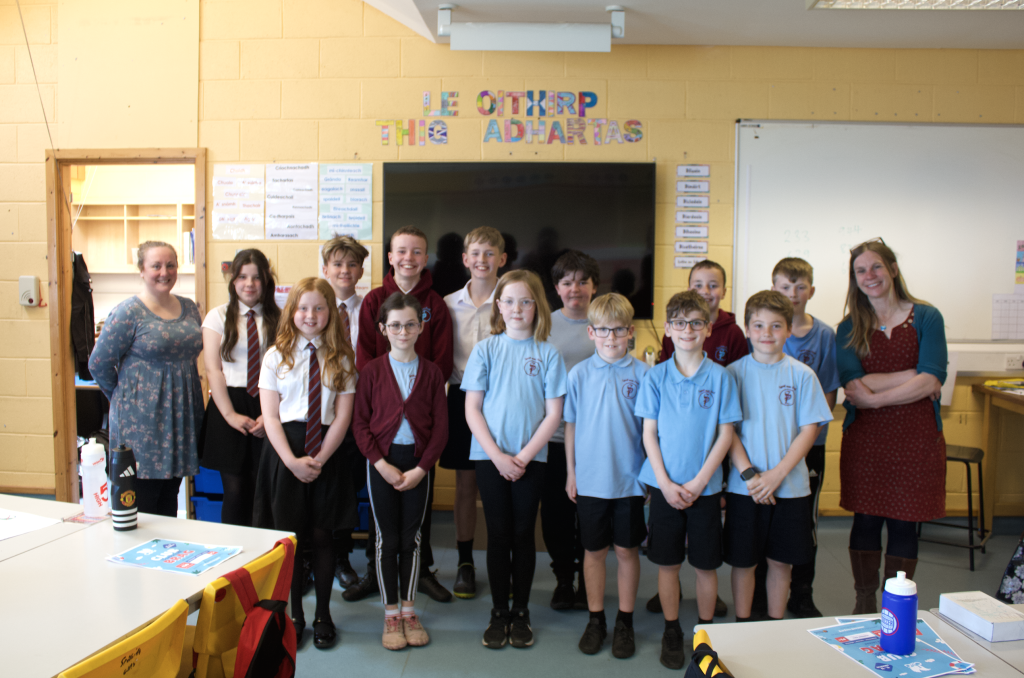 📷 Children from Sgoil nan Loch who sang a Gaelic psalm at the Stornoway Mòd, winning first place. With Gemma Malcolm, Kinloch Historical Society. June 2025. (Photo by Mary Stratman)
📷 Children from Sgoil nan Loch who sang a Gaelic psalm at the Stornoway Mòd, winning first place. With Gemma Malcolm, Kinloch Historical Society. June 2025. (Photo by Mary Stratman)
The Seinn Spioradail project culminated in an exhibition that has been on tour for the last 2 years across the Hebrides. It is currently on display at Comunn Eachdraidh Nis (Ness Historical Society) in Lewis and includes panels, objects, film, listening stations and digital archive. There is an accompanying website which hosts the digital archive – over 300 songs recorded as part of the project, with lyrics and translations. It has been a useful learning tool for singers looking to explore the tradition and learn some of the psalms and beautiful songs and hymns of the Hebrides. Other resources are being produced in the coming months including a CD and podcast series.
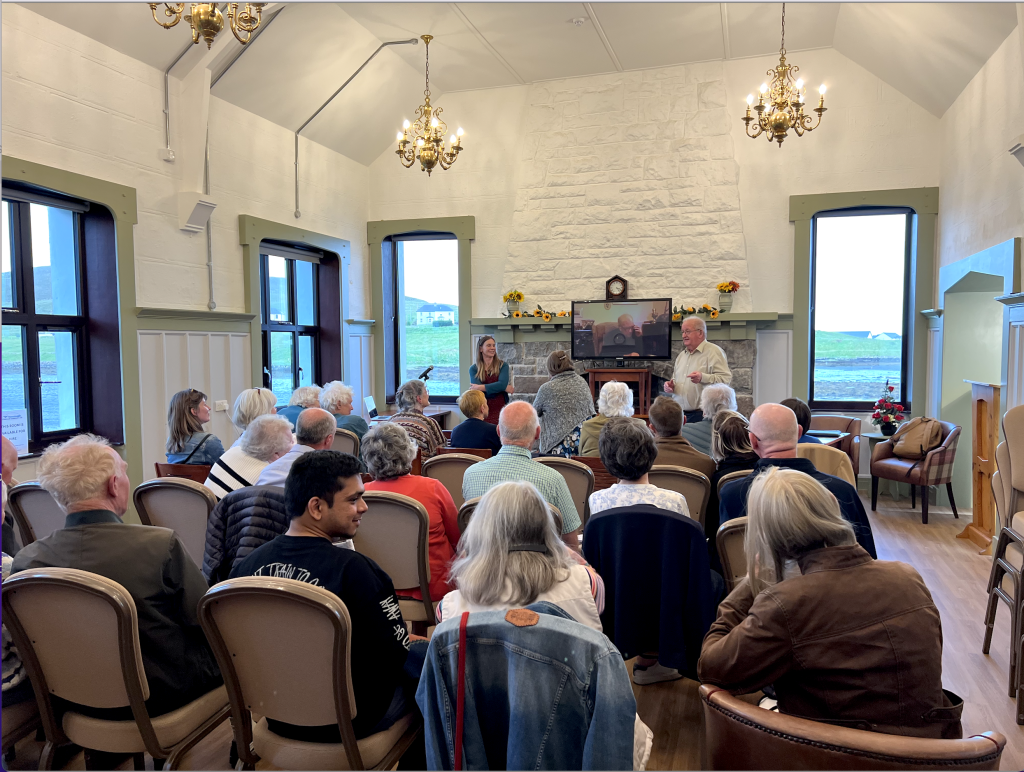 📷 Frances Wilkins with Hamish Taylor, Leverburgh, Harris. June 2025. (Photo by Mary Stratman)
📷 Frances Wilkins with Hamish Taylor, Leverburgh, Harris. June 2025. (Photo by Mary Stratman)
A highlight of the project for me was giving some public talks in Lewis and Harris over the summer, where I was accompanied by some incredible singers including Torquil MacLeod, Hamish Taylor, Murdo MacMillan and Jeanna Cumming. I was also invited, with the wonderful Gaelic singer Kristine Kennedy, to give a talk/performance at the British Academy in London as part of the event, ‘Memory Through Melody: Celebrating Sung Histories’. The British Academy funded a large part of the project and it was exciting to have the opportunity to bring the music to them. The 20 minute presentation is available to watch on YouTube (from 44 mins).
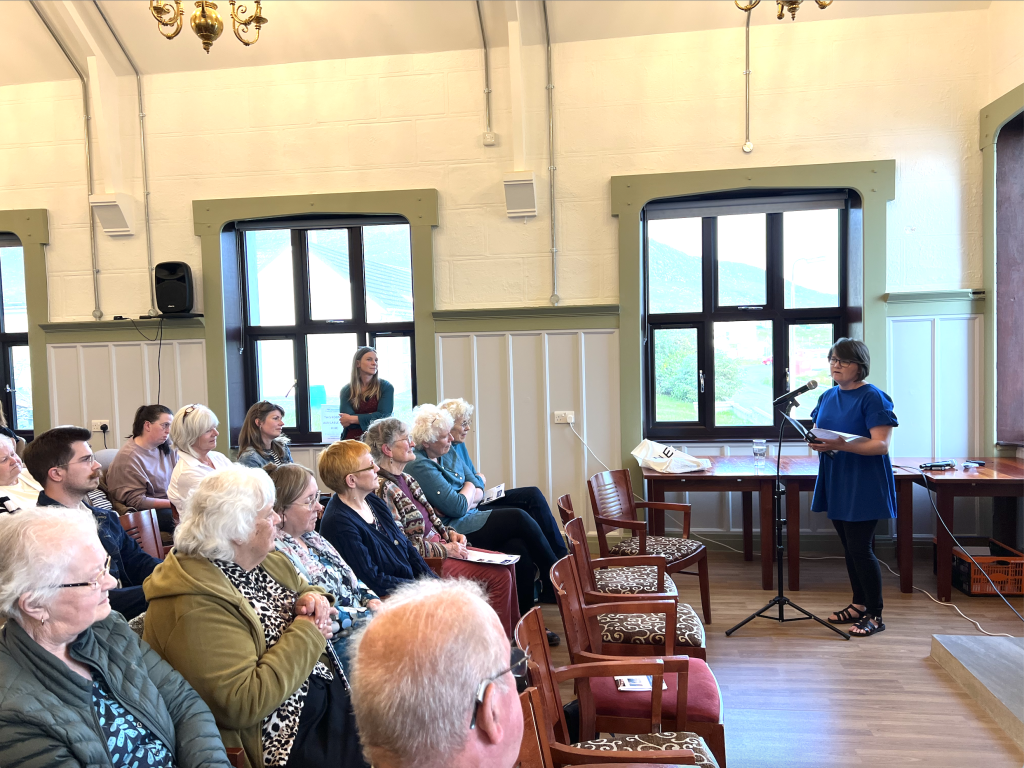 📷 Jeanna Cumming singing at public talk, Leverburgh, Harris. June 2025. (Photo by Mary Stratman)
📷 Jeanna Cumming singing at public talk, Leverburgh, Harris. June 2025. (Photo by Mary Stratman)
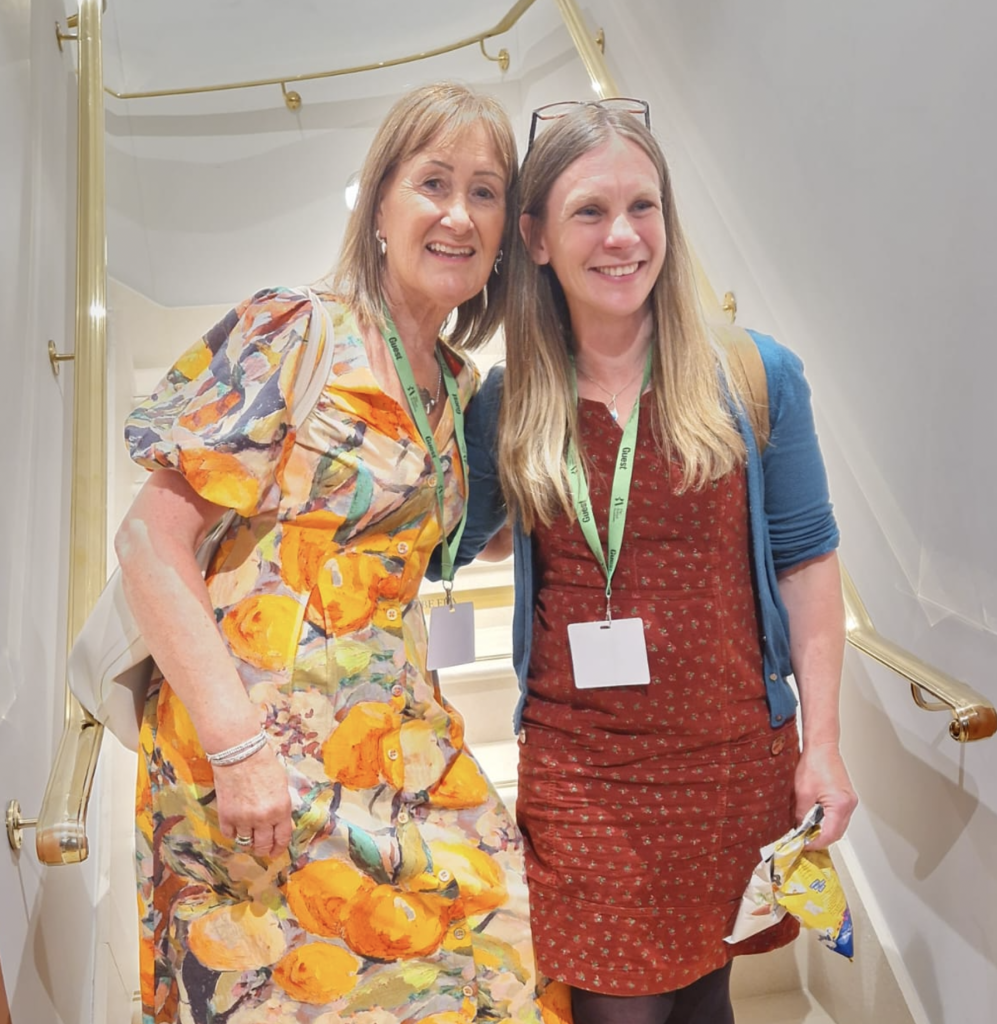 📷 Frances Wilkins and Kristine Kennedy at the British Academy, London. May 2025. (Photo by Oliver Wilkins)
📷 Frances Wilkins and Kristine Kennedy at the British Academy, London. May 2025. (Photo by Oliver Wilkins)
For more information on the project, including to see the exhibition panels, film and digital archive, visit franceswilkins.com/seinn-spioradail








